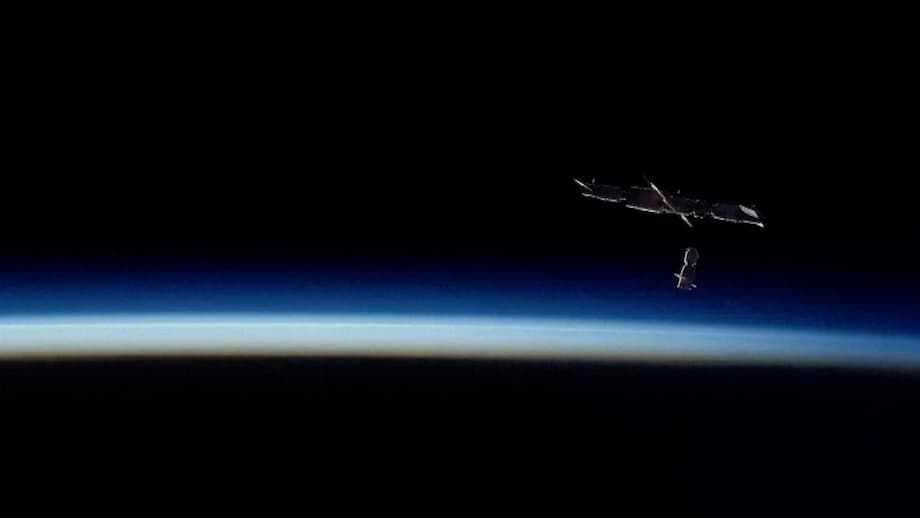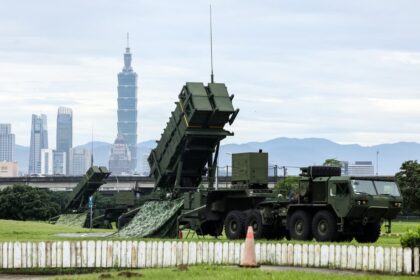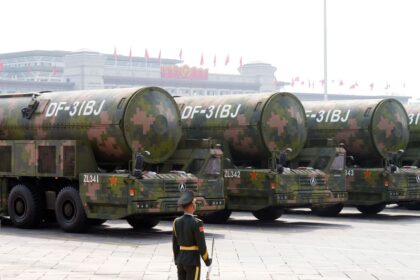China’s 8K Space Film: A New Era in Cinematic Storytelling
On September 5, 2025, audiences across China will witness a cinematic milestone: the nationwide premiere of the country’s first 8K ultra-high-definition film shot entirely in space. Titled variously as Shenzhou 13 and Window to the Blue Planet, this groundbreaking documentary offers an unprecedented, immersive view of life aboard China’s Tiangong space station, as experienced by the Shenzhou-13 crew during their historic six-month mission.
- China’s 8K Space Film: A New Era in Cinematic Storytelling
- How Was the Film Made? Overcoming the Challenges of Space Filmmaking
- What Does the Film Show? Life, Work, and the View from Orbit
- Why 8K? The Power of Ultra-High-Definition in Space
- International Recognition and Cultural Impact
- Behind the Scenes: The Human Story of Shenzhou-13
- Technological Innovations: Redefining Space and Cinema
- Public Reception and Anticipation
- In Summary
More than just a technical feat, the film blends awe-inspiring visuals with intimate moments, inviting viewers to experience the beauty and challenges of living and working in orbit. Narrated from the perspective of astronaut Wang Yaping, and filmed by Wang alongside fellow taikonauts Zhai Zhigang and Ye Guangfu, the movie marks a new chapter for both Chinese cinema and the global space documentary genre.
How Was the Film Made? Overcoming the Challenges of Space Filmmaking
Filming in space is a daunting endeavor. The Shenzhou-13 mission, launched on October 16, 2021, sent three astronauts to the core module of China’s space station for a record-setting 183-day stay. During this time, the crew not only conducted scientific experiments and spacewalks but also became filmmakers, capturing their journey with specially designed 8K cameras.
The production team, led by director Zhu Yiran and the China Media Group (CMG) Documentary Center, faced a series of unique challenges:
- Equipment Adaptation: Standard cameras cannot withstand the rigors of space. The team collaborated with aerospace engineers to develop 8K, 50fps, full-frame cameras that could survive rocket vibrations, operate in microgravity, and be safely charged and stored aboard the station.
- Training Astronauts: The taikonauts underwent intensive training in cinematography and documentary storytelling before launch, ensuring they could operate the equipment and capture compelling footage.
- Logistical Hurdles: All filming equipment was delivered to the space station via the Tianzhou cargo spacecraft in 2021. Memory cards and footage had to be carefully returned to Earth for post-production.
- Remote Direction: With no film crew in orbit, director Zhu and his team had to guide the astronauts remotely, relying on their adaptability and creativity to capture both planned and spontaneous moments.
Director Zhu Yiran explained the process:
“We redesigned every part of the camera system to withstand rocket launch vibrations, simplify astronaut operation, maintain handheld stability in zero gravity, allow fixed shooting from any angle, and enable charging in the station. The astronauts were highly intelligent and quickly mastered the use of the equipment.”
This collaborative effort between filmmakers and space engineers represents a fusion of vision, art, and technology, made possible by over 30 years of Chinese manned spaceflight advancements.
What Does the Film Show? Life, Work, and the View from Orbit
The heart of Shenzhou 13 lies in its ability to humanize the space experience. Rather than focusing solely on technical achievements, the film offers a rare, first-person perspective on daily life in orbit. Audiences will see:
- Stunning Cosmic Vistas: The 8K cameras capture breathtaking views of Earth from 400 kilometers above, as well as the vastness of space outside the station’s windows.
- Spacewalks and Science: The crew’s extravehicular activities (spacewalks) and scientific experiments are documented in vivid detail, showcasing both the danger and wonder of working in microgravity.
- Intimate Moments: From shared meals to personal reflections, the film reveals the emotional and psychological aspects of long-duration spaceflight.
- Educational Outreach: The Shenzhou-13 crew delivered two live classes from orbit, inspiring millions of students on Earth. These moments are woven into the narrative, highlighting the mission’s broader impact.
Wang Yaping’s narration guides viewers through these experiences, blending technical explanation with personal insight. Her voiceover, featured in the film’s trailer, echoes the aspirations of a nation reaching for the stars.
Why 8K? The Power of Ultra-High-Definition in Space
8K resolution represents the cutting edge of visual technology, offering four times the detail of 4K and sixteen times that of standard HD. For a film set in space, this clarity is transformative. Every detail—from the texture of the station’s walls to the curvature of Earth’s horizon—is rendered with breathtaking precision.
This technological leap serves both artistic and scientific purposes. For audiences, it means a more immersive, lifelike experience. For researchers and educators, the footage provides valuable documentation of life and work in space, potentially aiding future missions and inspiring the next generation of scientists and explorers.
To maximize accessibility, the film will be released in multiple formats, including CINITY 4K 50fps, CINITY LED, IMAX, CGS China Giant Screen, and 4DX. This ensures that viewers across China can experience the film’s visual splendor, regardless of their local cinema’s capabilities.
International Recognition and Cultural Impact
Even before its official release, Shenzhou 13 has garnered international attention. It was showcased as the centerpiece of the China Film Pavilion at Hong Kong’s Filmart, drawing praise from industry observers and journalists. The Hollywood Reporter described the film as opening a new frontier for Chinese cinema, while Italian journalist Alessandra Spalletta called it “an emotional journey bridging Earth and the cosmos.”
The film’s debut also marks the first time the China Central Television Film Channel logo will appear in national cinemas, symbolizing a new era for state-backed cinematic projects. Its success is expected to boost China’s film industry, which has seen a resurgence in recent years with a growing number of domestic and international releases.
Beyond its technical and artistic achievements, Shenzhou 13 serves as a cultural milestone. It celebrates China’s rapid progress in space exploration, showcases the nation’s scientific and creative talent, and invites audiences to reflect on humanity’s place in the universe.
Behind the Scenes: The Human Story of Shenzhou-13
The Shenzhou-13 mission was more than a scientific endeavor—it was a deeply human journey. The three taikonauts, Zhai Zhigang, Wang Yaping, and Ye Guangfu, spent 183 days in orbit, setting a new record for China’s longest continuous spaceflight. Their mission included:
- Two extravehicular activities (spacewalks)
- Numerous scientific experiments and maintenance tasks
- Educational outreach to students on Earth
- Daily routines of exercise, meals, and personal time
By filming their experiences, the crew not only documented their work but also shared their emotions, challenges, and triumphs. The result is a film that resonates on both a personal and national level.
Director Zhu Yiran emphasized the importance of authenticity:
“Directing remotely added to the complexity, but this made the film more authentic and closer to the astronauts’ true experiences.”
This authenticity is evident in the film’s intimate moments, from the camaraderie among crew members to their reflections on seeing Earth from above—a perspective that has inspired astronauts worldwide to appreciate and protect our planet.
Technological Innovations: Redefining Space and Cinema
The success of Shenzhou 13 is a testament to China’s growing capabilities in both space exploration and filmmaking. The project required:
- Redesigning camera systems for space conditions
- Developing new protocols for data storage and transfer
- Cross-disciplinary collaboration between filmmakers, engineers, and astronauts
- Innovative approaches to remote direction and storytelling
These innovations have broader implications. As space missions become more frequent and complex, the ability to document and share these experiences will be increasingly valuable. The film sets a precedent for future collaborations between the arts and sciences, both in China and globally.
Public Reception and Anticipation
Interest in Shenzhou 13 has been high since the release of its trailer and the announcement of ticket sales. Produced by China Media Group, the film promises to deliver a rare, first-person perspective on life in space, appealing to both space enthusiasts and general audiences.
Its release coincides with a period of renewed interest in space exploration, as China continues to expand its presence in orbit and beyond. The film’s educational and inspirational value is expected to resonate with viewers of all ages, fostering a deeper appreciation for science, technology, and the spirit of exploration.
In Summary
- China’s first 8K space film, Shenzhou 13 (also known as Window to the Blue Planet), premieres nationwide on September 5, 2025.
- The film documents the six-month Shenzhou-13 mission aboard the Tiangong space station, offering unprecedented visuals and personal insights.
- Filmed by astronauts Wang Yaping, Zhai Zhigang, and Ye Guangfu using specially designed 8K cameras, the project overcame significant technical and logistical challenges.
- Director Zhu Yiran and the China Media Group team collaborated closely with aerospace engineers and trained the crew in filmmaking techniques.
- The film has received international recognition and is expected to inspire audiences with its blend of scientific achievement, artistic vision, and human storytelling.
- Its release marks a new era for Chinese cinema and space exploration, highlighting the power of technology and creativity to bridge Earth and the cosmos.












